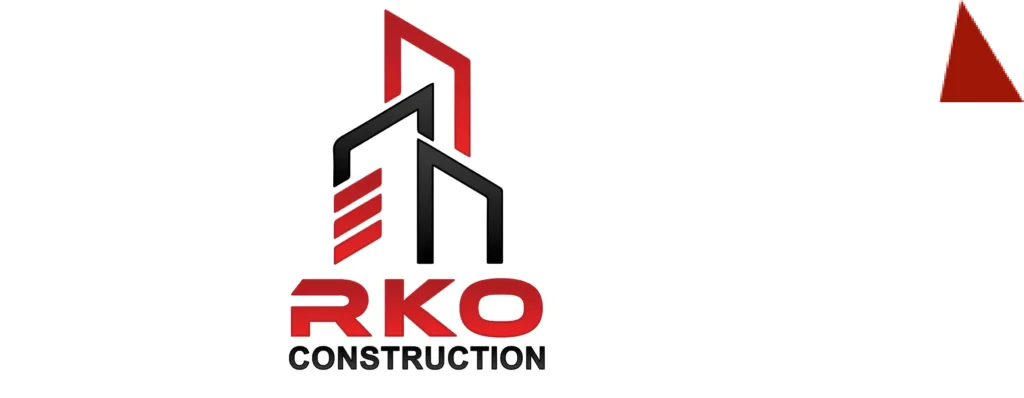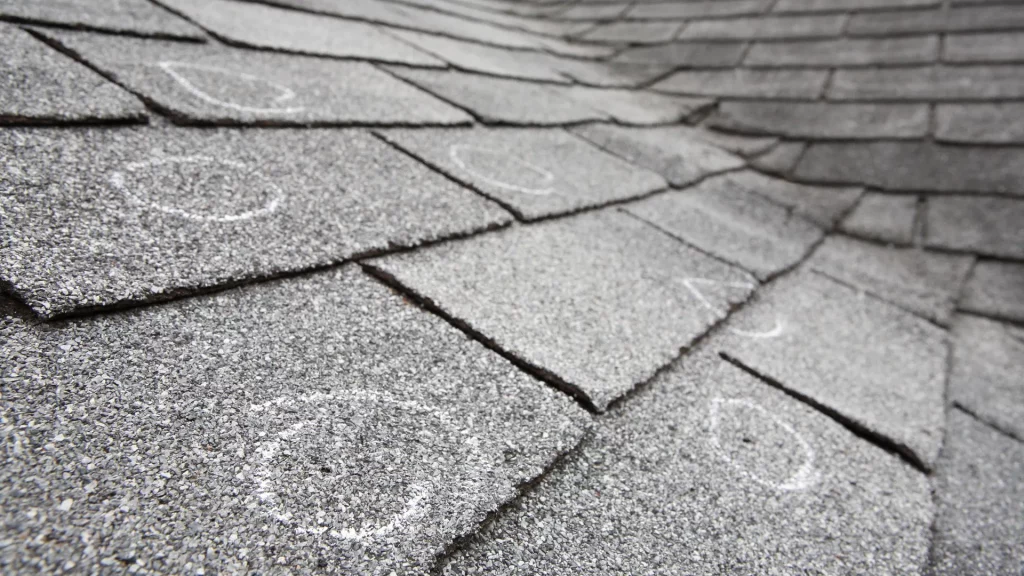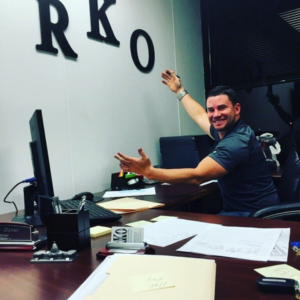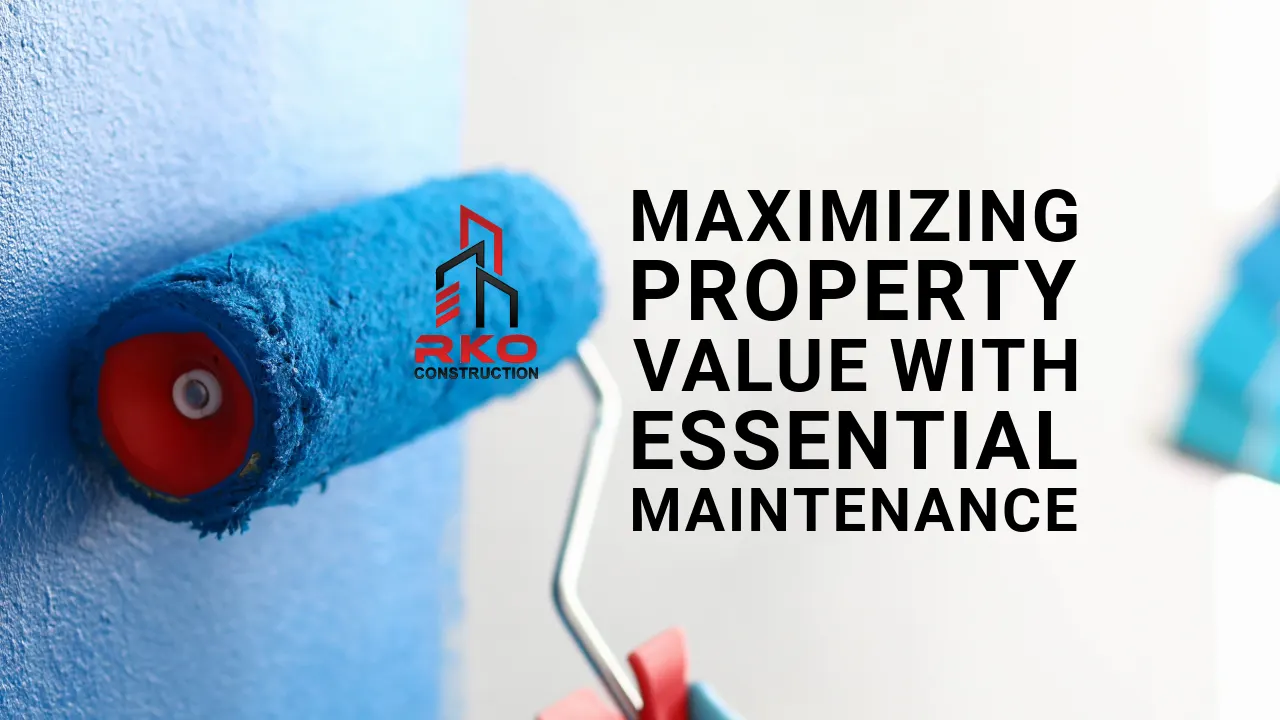The Impact of Hail on Roofs in Dallas-Fort Worth and the Importance of Timely Action
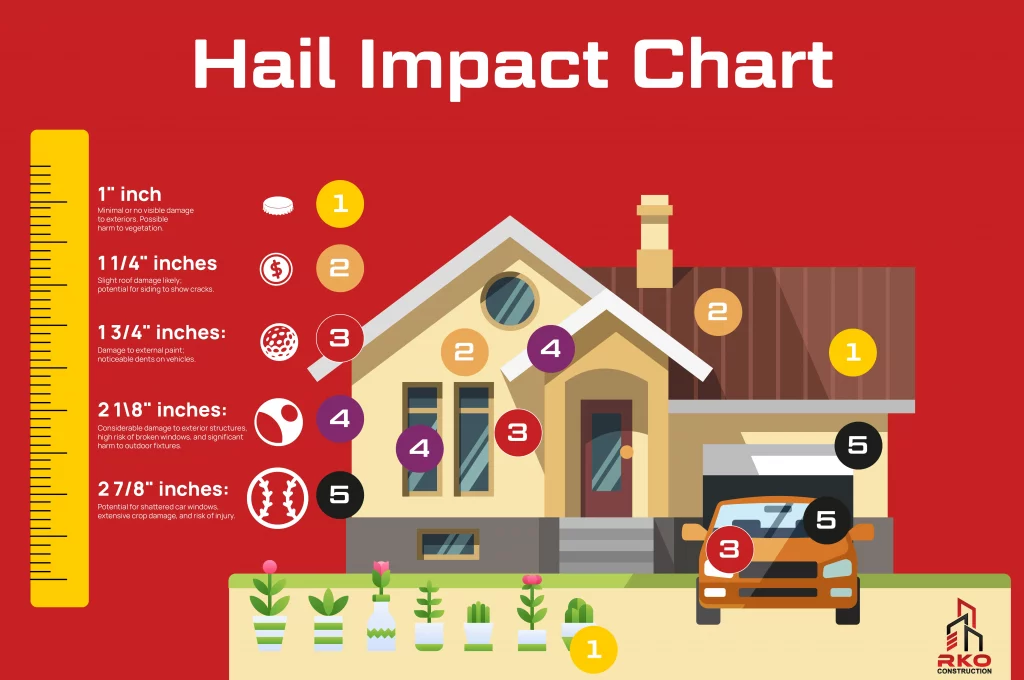
Hailstorms, particularly prevalent in the Dallas-Fort Worth area, pose a significant threat to one of the most vital components of your home: the roof. Understanding hail roof damage is crucial for homeowners in Texas, as it can range from subtle to severe, impacting the roof’s appearance, functionality, and lifespan.
When hailstones, frozen pellets of varying sizes, pelt down from the sky, they can cause many issues with roofing materials in Dallas, Fort Worth, and surrounding areas. The extent of this damage often depends on factors like hail size, wind speed, and the roof’s material and condition. From minor cosmetic blemishes in Arlington to significant structural impairments in Plano, hail-damaged roofs can lead to significant problems if they are not promptly and adequately addressed.
Recognizing what hail damage looks like on a roof and how hail damages a roof is the first step in mitigating these issues, especially in hail-prone regions like North Texas. It’s not just about the immediate repairs; understanding hail damage is essential for maintaining the integrity of your roof and ensuring the safety and security of your home in the DFW metroplex. This article aims to guide you through identifying, assessing, and addressing roof hail damage, helping you make informed decisions about repairs, insurance claims, and preventive measures in the Dallas-Fort Worth area.
As we delve deeper into topics like how much hail damage to replace the roof, what size hail will damage a roof, and will insurance pay for hail damage to a metal roof in Texas, you’ll gain a comprehensive understanding of how to effectively manage and protect your home from the aftermath of a hailstorm in the Lone Star State.
Understanding Hail Damage on Roofs
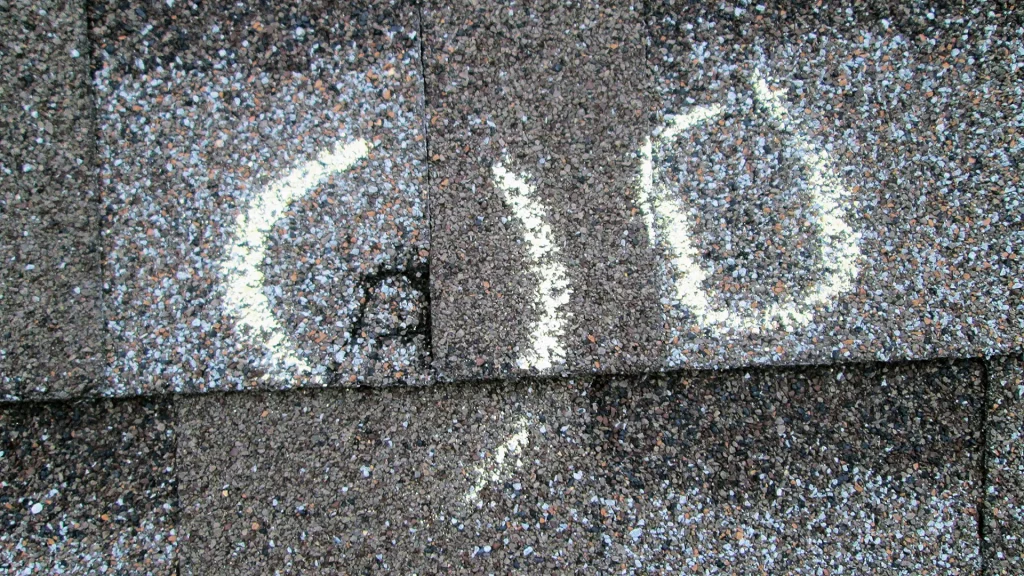
What Does Hail Damage Look Like on a Roof?
Hail damage on roofs can manifest in various ways, depending on the type of roofing material and the intensity of the hailstorm. Here are some common visual indicators:
- Asphalt Shingles: Look for dents, missing granules (creating bare spots), and cracks. Hail hits can leave a distinct pattern of small, dark spots where the granules have been knocked off.
- Metal Roofs: Dents and dings are common in metal roofs after hail. These may be more cosmetic but can compromise the roof’s integrity over time.
- Wooden Shingles: Hail can split wooden shingles, leaving sharp edges and a distinct split pattern that runs along the grain.
- Tile Roofs: Hail can crack or shatter tiles, which is often more visible compared to other materials.
The Science Behind Hail Impact
Hail can cause significant damage to roofs, and understanding the science behind it helps assess and address the damage effectively.
- Impact of Hailstones: Hailstones can vary in size, from small pellets to the size of a golf ball or larger. The impact of these ice balls can bruise, crack, or completely break roofing materials.
- Factors Influencing Severity:
- Hail Size: Larger hailstones cause more damage. The Hail Damage Chart provides a reference for the potential damage based on hail size.
- Wind Speed and Direction: Wind can affect the angle and velocity of hail, impacting the severity and location of the damage on the roof.
- Roof Material: Different materials absorb impact differently. For instance, metal may dent, while asphalt may lose granules.
- Roof Age and Condition: Older roofs or those in poor condition are more susceptible to severe damage.
Understanding these aspects of hail damage is crucial for homeowners and professionals in assessing the extent of damage and planning the appropriate course of action for repairs or replacements.
Assessing the Severity of Hail Damage
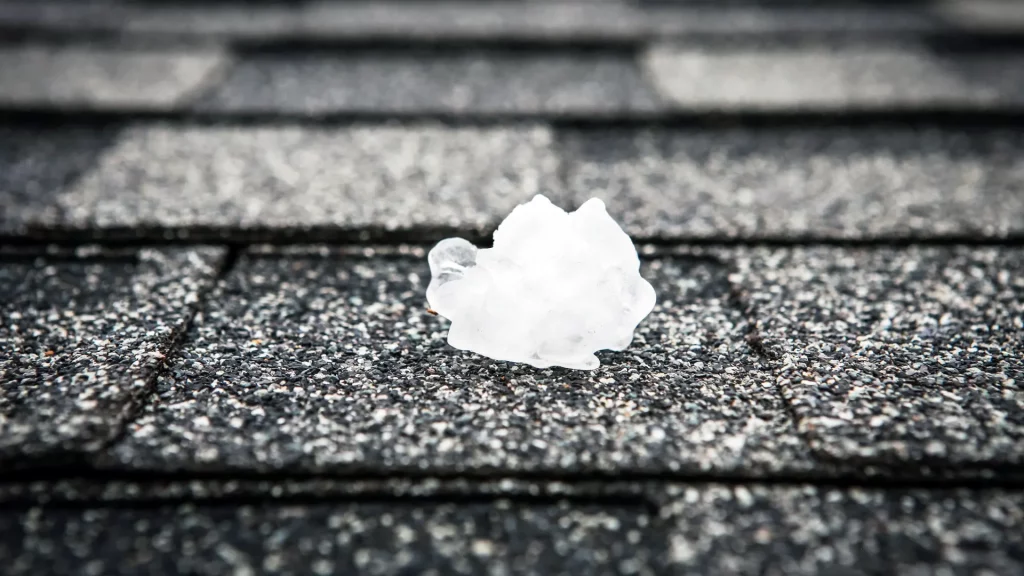
What Size Hail Will Damage a Roof?
The potential for roof damage significantly increases with the size of the hail. Here’s a quick reference chart correlating hail size with the likely impact on your roof:
- 1 inch: May cause little to no damage to most roofs.
- 1.25 inches: Can cause minor damage, especially to asphalt shingles and siding.
- 1.5 inches: Likely to cause severe damage, particularly to older roofs.
- 1.75 inches: Can damage even sturdy materials, leading to broken tiles or dented metal.
- 2 inches and above: Almost always causes noticeable damage, including potential structural issues.
How to Tell if Your Roof Has Hail Damage
DIY Inspection Tips:
- Safety First: Ensure it’s safe to inspect your roof. If you have any doubts, it’s better to call a professional.
- Look for Visible Signs: Check for dents, cracks, or missing pieces in roofing materials.
- Check Gutters and Downspouts: Look for an accumulation of granules (for asphalt roofs) or dents (for metal roofs).
- Inspect the Surroundings: Sometimes, damaged outdoor items, like air conditioners or garden sheds, can indicate roof damage.
- Photograph Any Damage: This can be helpful for insurance claims.
When to Call a Professional:
- If you’re unsure about the extent of the damage.
- If the roof is difficult to access or steep.
- For a thorough assessment, especially if you suspect underlying structural damage.
- To confirm your findings and get an expert opinion on the necessary repairs or replacement.
Knowing how to assess hail damage and when to involve a professional roofer is crucial in maintaining the integrity of your roof and ensuring the safety of your home.
Dealing with Hail-Damaged Roofs
How Much Hail Damage to Replace Roof
Determining whether to repair or replace a hail-damaged roof depends on several factors. The extent of damage is a primary consideration; minor damages like a few missing shingles can often be repaired. However, widespread or severe damage, such as deep cracks or numerous broken tiles, might necessitate a complete roof replacement. The roof’s age also plays a role; older roofs nearing the end of their lifespan might be better off replaced. Lastly, consider the cost-effectiveness of repairs versus replacement in the long term.
Insurance Coverage and Claims
Insurance typically covers hail damage, but the extent of coverage can vary based on your policy. Most policies cover the cost of repairs or replacement minus your deductible. Understanding the policy terms for metal roofs is essential, as some insurers might view dents as cosmetic damage. When filing a claim, thoroughly document the damage and promptly contact your insurance provider. An adjuster will assess the damage to determine the claim amount. It’s advisable to have a roofing professional present during this assessment to ensure all damage is accounted for.
Preventive Measures and Protective Solutions
Preventive Measures: Consider installing hail-resistant roofing materials to minimize future hail damage. These materials are rated based on their ability to withstand hail impact. Regular maintenance and inspections are also crucial. They can help identify and address minor issues before they become significant problems, especially after a hailstorm.
Protective Solutions: Advancements in roofing technology have led to more durable and hail-resistant materials. These include impact-resistant shingles and reinforced metal roofing. The importance of professional installation cannot be overstated; a well-installed roof using quality materials is your best defense against hail damage. Regular updates on roofing technology and materials can provide additional layers of protection for your home.
Case Studies and Real-Life Scenarios
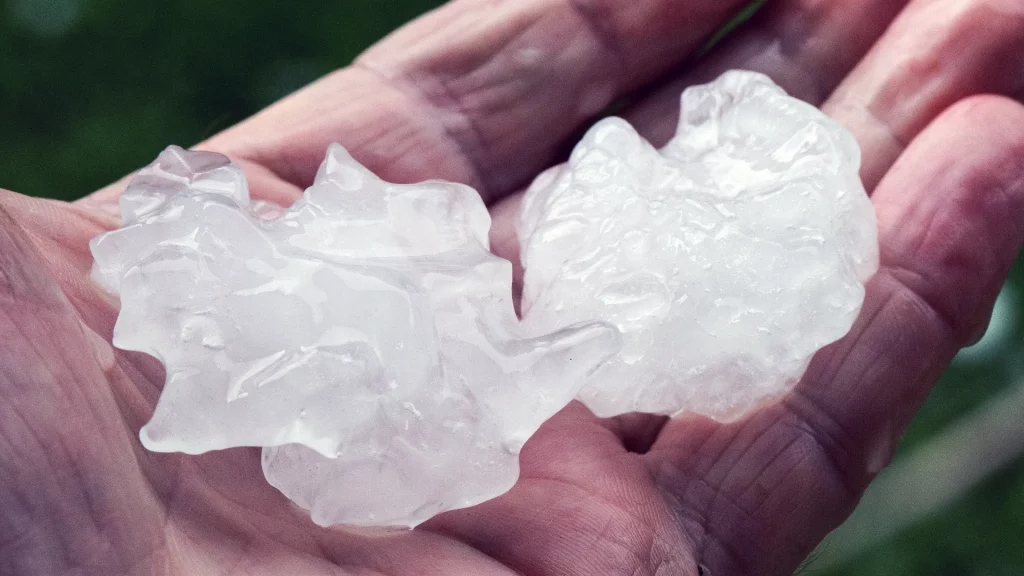
Real-Life Examples of Hail Roof Damage
Case Study 1: Residential Asphalt Shingle Roof in Dallas
- Scenario: A severe hailstorm hit a residential area in Dallas, with hailstones measuring up to 1.75 inches.
- Outcome: Significant granule loss and cracked shingles were observed. The homeowner filed an insurance claim, and the roof was deemed to require a complete replacement due to the extent of the damage and the roof’s age.
- Lesson: Early intervention and regular inspections could have identified weak spots that made the roof more susceptible to hail damage.
Case Study 2: Commercial Metal Roof in Fort Worth
- Scenario: A commercial building with a metal roof experienced a hailstorm with 2-inch hailstones.
- Outcome: While the roof sustained multiple dents, a professional assessment concluded that the structural integrity was intact, requiring only minor repairs.
- Lesson: The durability of metal roofs against hail damage was evident, though cosmetic damage should still be addressed promptly.
From these case studies, several key takeaways emerge:
- Material Matters: The type of roofing material significantly influences the extent of hail damage. While metal roofs may sustain cosmetic damage, asphalt shingles are more prone to structural damage.
- Proactive Maintenance: Regular roof inspections and maintenance play a crucial role in mitigating the impact of hail damage.
- Insurance Savvy: Understanding your insurance policy and the claim process is crucial in efficiently addressing hail damage.
- Professional Assessment: Consulting with roofing professionals post-hailstorm ensures accurate damage assessment and appropriate repair or replacement decisions.
These real-life scenarios underscore the importance of being prepared and informed about the potential impacts of hail on different roofing materials and the value of expert guidance in navigating post-storm recovery.
Frequently Asked Questions
1. What does hail damage do to a roof? Hail damage can range from cosmetic to structural issues. It can cause loss of granules on asphalt shingles, leading to leaks and reduced lifespan. On metal roofs, it may result in dents. Severe hail can crack or break tiles and wooden shingles.
2. How much hail damage for insurance to replace a roof? Insurance typically covers roof replacement if the damage compromises the roof’s integrity. The decision depends on the extent of damage, the age of the roof, and specific policy terms. An adjuster’s assessment is crucial in determining if a replacement is warranted.
3. Will insurance pay for hail damage to a metal roof? Insurance usually covers hail damage to metal roofs if it affects the roof’s functionality. However, if the damage is purely cosmetic, some policies might not cover it. It’s important to review your policy’s specifics regarding metal roof coverage.
4. How can I tell if my roof has hail damage? Look for dents in metal roofs, missing granules or cracks in asphalt shingles, and split wood or broken tiles in other materials. Also, check gutters for accumulated granules. For a thorough assessment, consider hiring a professional.
5. What size hail will damage a roof? Hail as small as 1 inch can cause damage, especially to older roofs. The severity of damage generally increases with hail size, with hail over 1.5 inches likely causing significant damage.
6. How does hail damage a roof? Hail damages a roof by impacting at high velocity, which can bruise or crack roofing materials. The extent of damage depends on hail size, wind speed, and roof material. Older roofs or those in poor condition are more vulnerable.
7. How do you prevent hail damage on roofs? Use hail-resistant roofing materials, such as Class 4-rated shingles or reinforced metal roofing. Regular maintenance and inspections can also help identify vulnerabilities and mitigate potential damage from hail.
Hail Roofing Damage Conclusion
Dealing with hail damage on your roof can be daunting, but being proactive is vital to protecting your home or business. Understanding the signs of hail damage, knowing when to seek professional help, and being informed about your insurance coverage are crucial steps in effectively managing the aftermath of a hailstorm. Remember, timely action can prevent minor damage from escalating into major, costly repairs.
Don’t let hail damage compromise the safety and integrity of your roof. If you suspect your roof has been affected by a recent hailstorm or want to take preventive measures against future damage, RKO Construction is here to help. Our team of experienced professionals is equipped to provide thorough inspections, expert assessments, and high-quality repairs or replacements. We’re committed to ensuring your roof is strong, secure, and ready to withstand the elements.
Contact RKO Construction today for a consultation, and let us help you safeguard your property against hail damage and fix your roof in the Dallas-Fort Worth area.
Contact Us | Call Us: 866-437-5066
